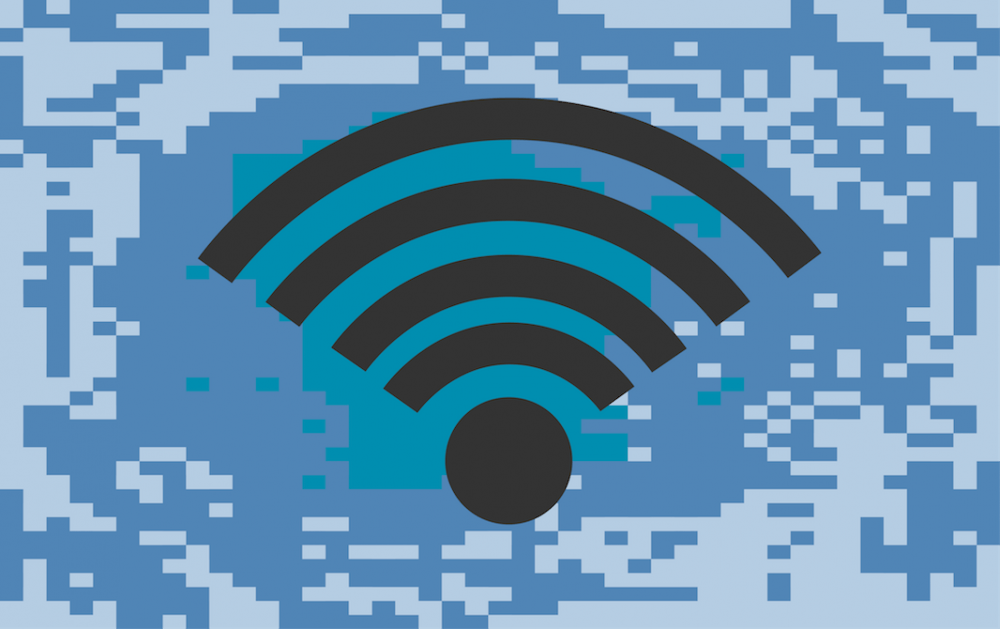It's 11:50 p.m., just nine minutes before your Blackboard deadline. Your eyes are heavy and your hands are typing frantically, when suddenly the web page is replaced by the words "There is no Internet connection."
Even if most students haven't experienced this dramatic scenario, a dropped connection on campus is common.
Wi-Fi is a necessity for college students, so it's easy to be frustrated with the University whenever the transparent icon endlessly searches for a signal, or a basic search on Google takes several minutes to load.
However, the cause for some of the Wi-Fi's occasional dysfunction comes from students, not the ASU.
Many of the prohibited devices often used in dorms — such as personal wireless routers, wireless video streaming devices (Roku, Google Chromecast, Amazon FireStick), printers with a wireless setting on and more — are banned specifically because they interfere with Wi-Fi connection.
Stephen Quick, a systems support analyst for ASUP University Housing, said these devices crowd the network.
“The basic problem is that wireless routers, printers, gaming controllers — all of those things operate on the same frequencies as the ASU network,” Quick said. “So what happens from the resident’s perspective is your computer is trying to connect to the ASU access point, but the data packets are being interrupted from accomplishing their transmission.”
Essentially, the signals broadcast by banned items can block campus Wi-Fi signals, resulting in a poor connection.
Kyle Evans, a community coordinator at ASU, said the University informs students about prohibited devices at many stages.
"Students are informed of items prohibited during floor meetings, signage, as well as documented in the University Housing Agreement," Evans said.
Ronald Briggs, senior director of residential life in ASU's Educational Outreach and Student Services department, said the University tries to keep these devices out of the dorms.
"As part of health and safety inspections, residence hall staff inspect University space to ensure residents are not in violation of hall policies," Briggs said. "Should staff observe a violation, students are notified and documentation is created, which is shared with the Office of Student Rights and Responsibilities."
Even so, the problem persists on campus, which suggests some students are unaware of this particular University policy or don't comprehend why it was put in place. And given the number of students playing Xbox in their rooms or streaming Netflix from their Chromecasts, it's unclear how heavily regulated these prohibited devices are.
To fix the issue, Quick said students should ensure there is nothing in their dorms that might be worsening the signal for the community.
For example, printers are harmless so long as the wireless setting is turned off. In addition, any wireless routers or access points brought in by students should be turned off and removed from the dorm, as they create the greatest range of interference. Other devices, such as wireless gaming controllers, don't cause interference when plugged in.
As a general rule, anything that outputs a signal (aside from cell phones and laptops) should probably not be used wirelessly. Students can contact the Housing Technology Center with questions about specific devices not listed under ASU’s prohibited items.
“The scale and scope of the problem is sort of omnipresent just because of the sheer volume of the devices that exist,” Quick said.
Just one wireless router can transmit a signal that reaches about 150 feet in every direction. Considering the size of most residence halls, this means one device can worsen the connection for several nearby rooms — above, below and beside the source.
However, residence halls usually have more than just one of these devices. Students can test it themselves by looking at the available networks on a smartphone. When trying to connect to Wi-Fi, they will most likely see various printers and other non-ASU devices.
At the very least, the next time your Wi-Fi goes out in the middle of an assignment, don’t blame ASU — blame your neighbor’s Apple TV.
Reach the reporter at jkbeneve@asu.edu or follow @JacobBenevento on Twitter.
Like The State Press on Facebook and follow @statepress on Twitter.




